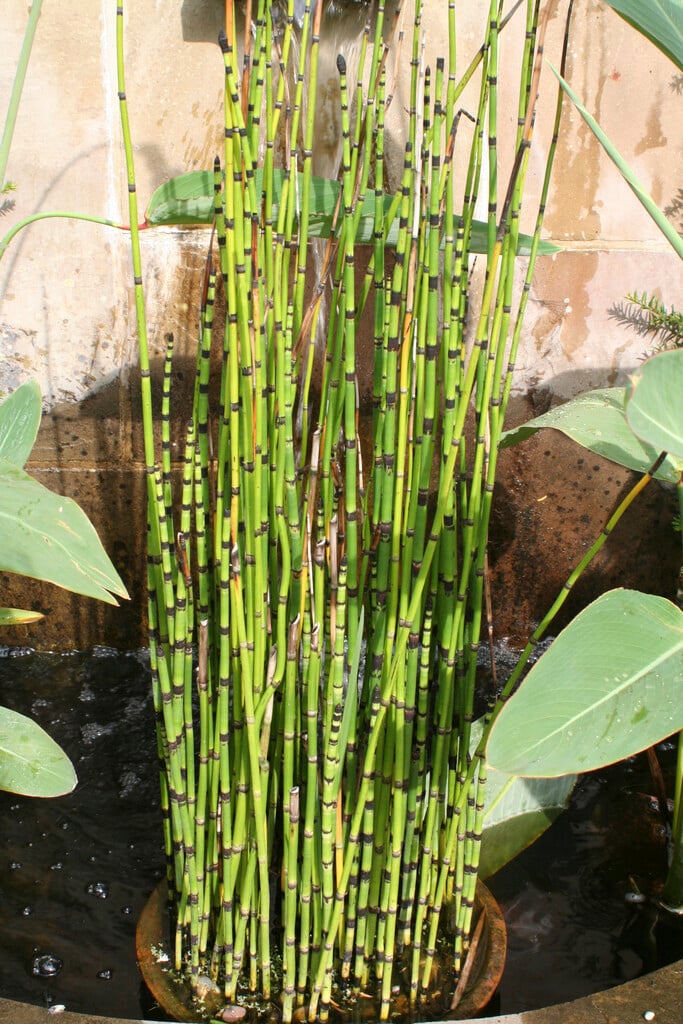Equisetum fluviatile
swamp horsetail
An upright, clump-forming, rhizomatous perennial to about 1m high, with mostly hollow, ridged and jointed stems with yellow-brown banding. Thin branches emerge in whorls around the stem nodes. On fertile stems, blunt spore-bearing cones are produced at the tips.
Other common names
smooth horsetailSize
Ultimate height
0.5–1 metresTime to ultimate height
2–5 yearsUltimate spread
0.5–1 metresGrowing conditions
Moisture
Poorly–drained, Moist but well–drainedpH
Acid, Alkaline, NeutralColour & scent
| Stem | Flower | Foliage | Fruit | |
| Spring | Green Yellow Brown | |||
|---|---|---|---|---|
| Summer | Green Yellow Brown | |||
| Autumn | Green Yellow Brown | |||
| Winter | Green Yellow Brown |
Position
- Full sun
- Partial shade
Aspect
South–facing or West–facing or North–facing or East–facing
Exposure
Exposed or Sheltered Hardiness
H7Botanical details
- Family
- Equisetaceae
- Native to GB / Ireland
- Yes
- Foliage
- Semi evergreen
- Habit
- Columnar upright
- Genus
Equisetum are also known as horsetails or living fossils as they are the only living genus in Equisetaceae, a family of vascular plants which reproduce by spores rather than seeds. Plants have a rush-like appearance.
- Name status
Correct
How to grow
Cultivation
Grow in fertile, permanently moist soil, or in water up to 10cm deep. Good in containers, which can help to contain spread. See pond plants and bog gardens for further advice
Propagation
Propagate by division in spring
Suggested planting locations and garden types
- Patio and container plants
Pruning
Remove dead or damaged stems to improve appearance
Pests
Generally pest-free
Diseases
Generally disease-free
Get involved
The Royal Horticultural Society is the UK’s leading gardening charity. We aim to enrich everyone’s life through plants, and make the UK a greener and more beautiful place.
